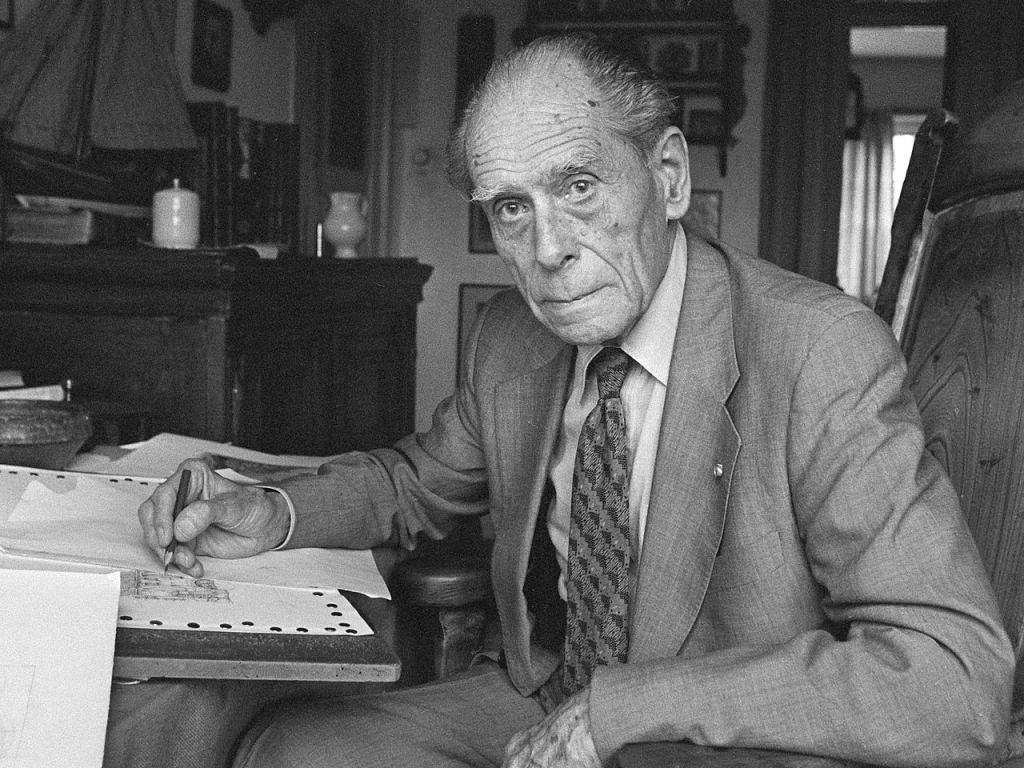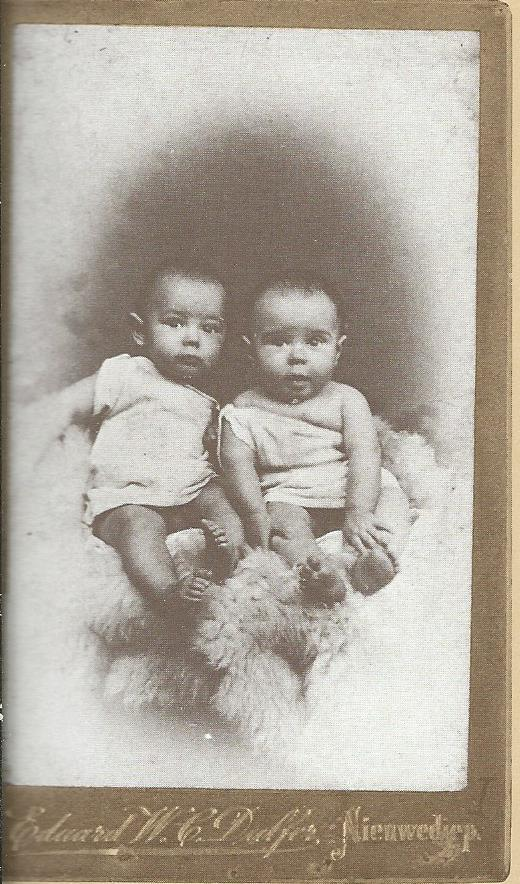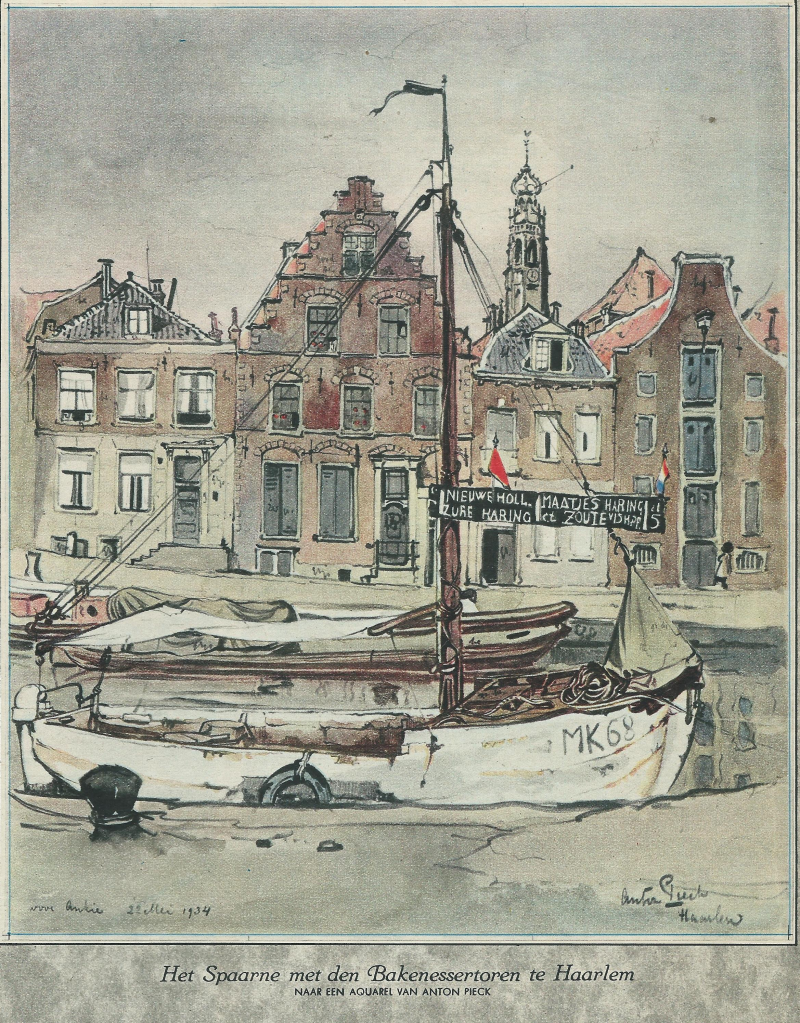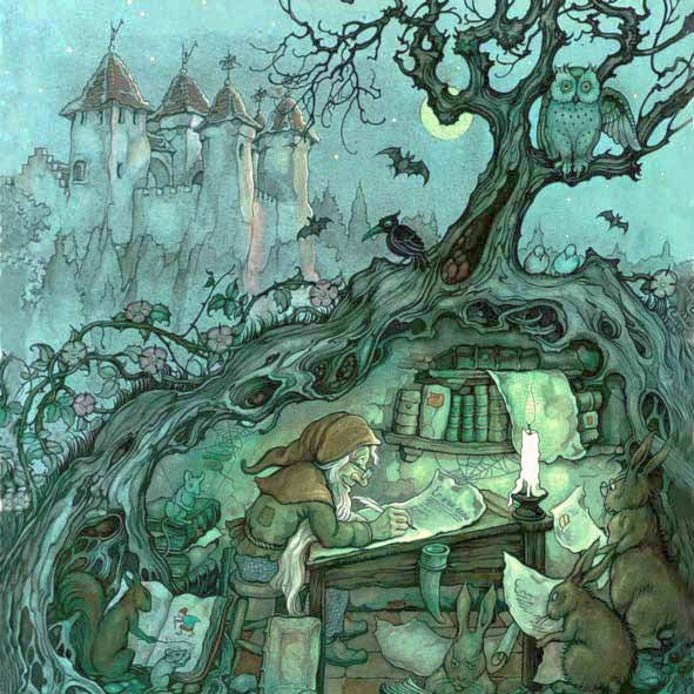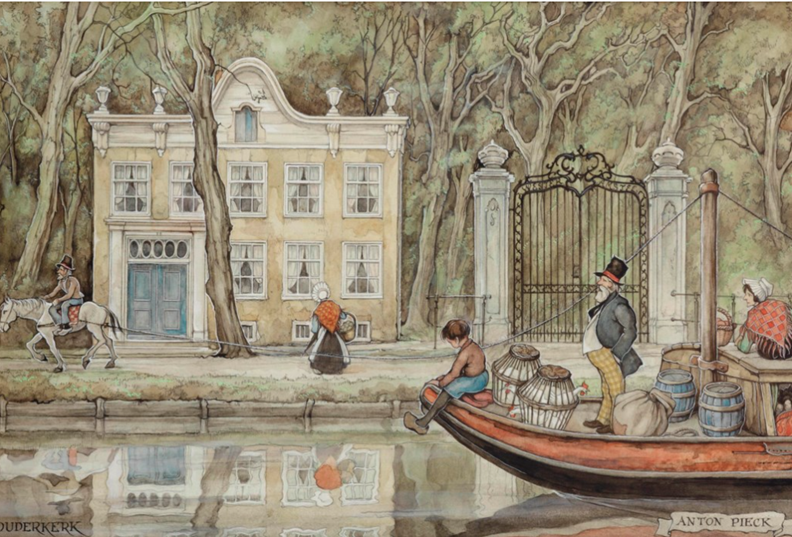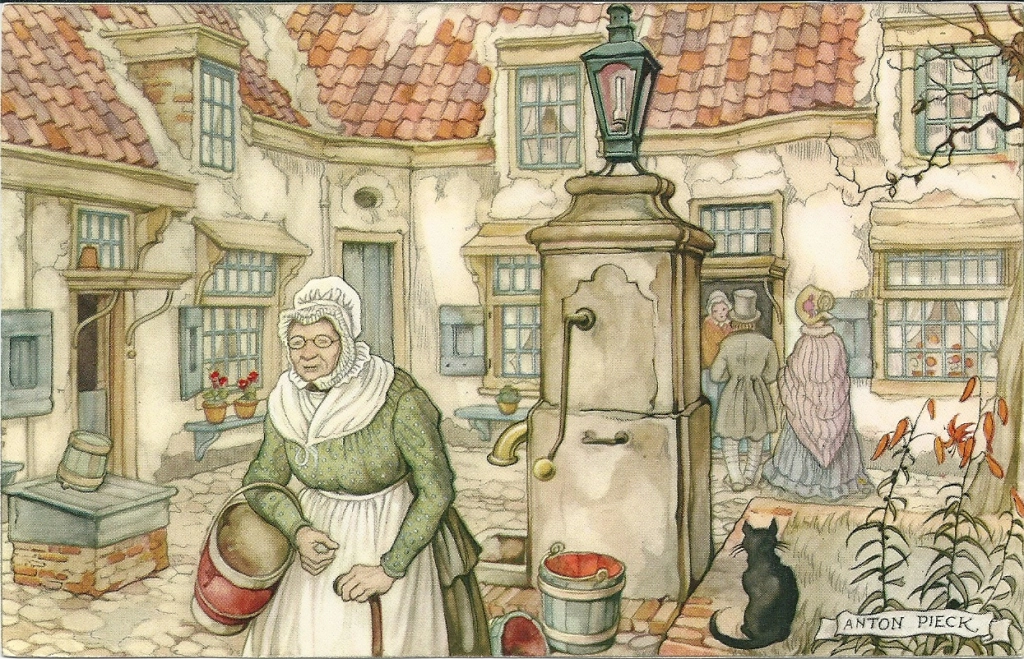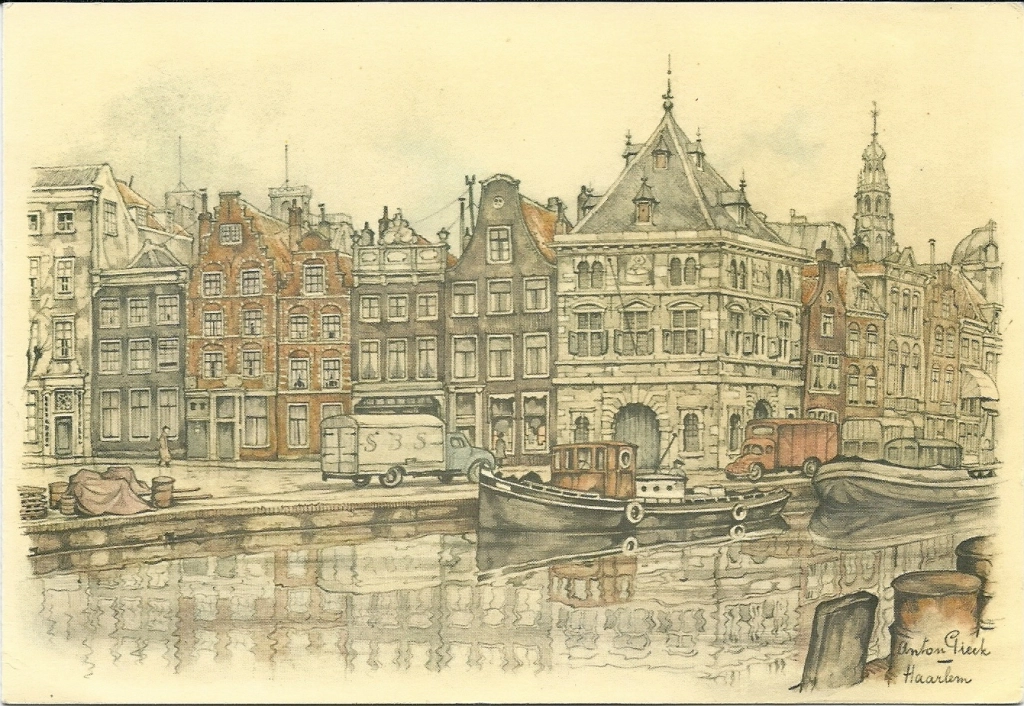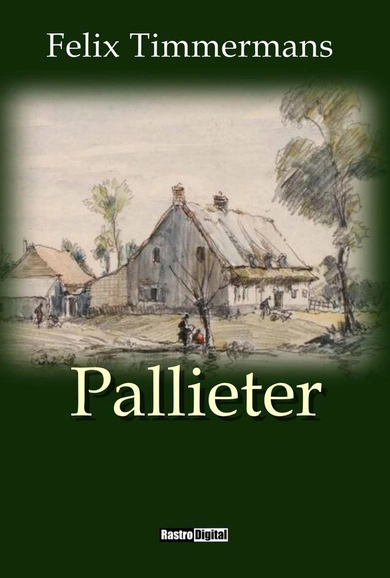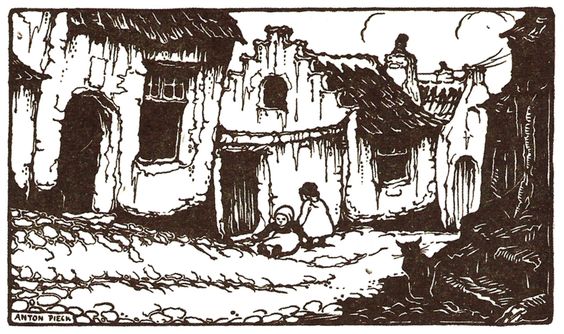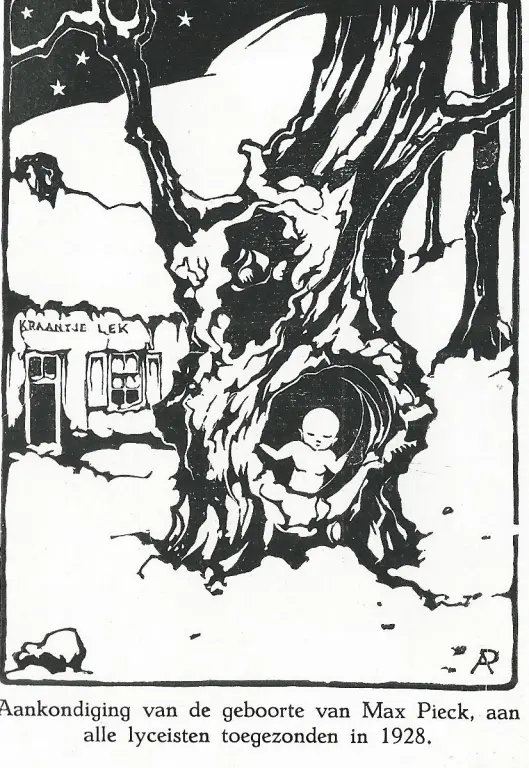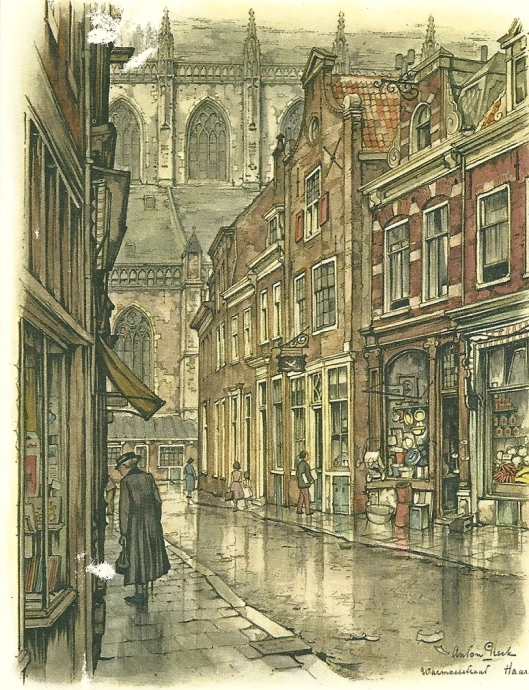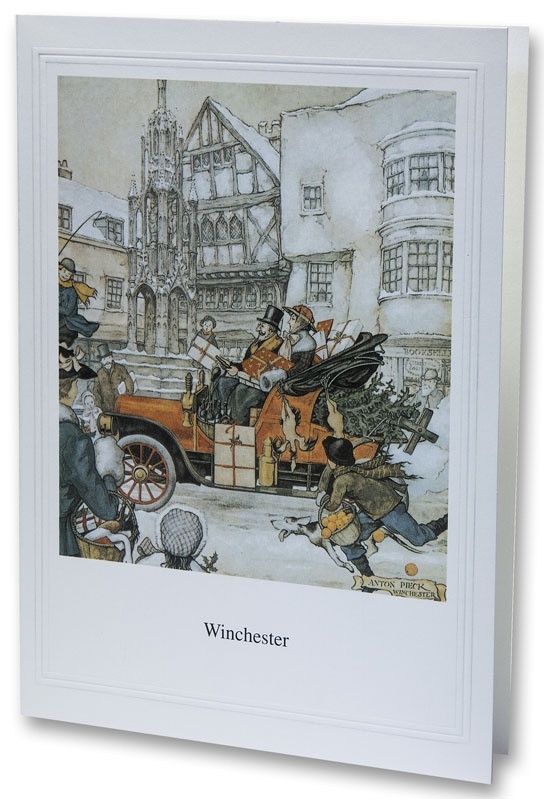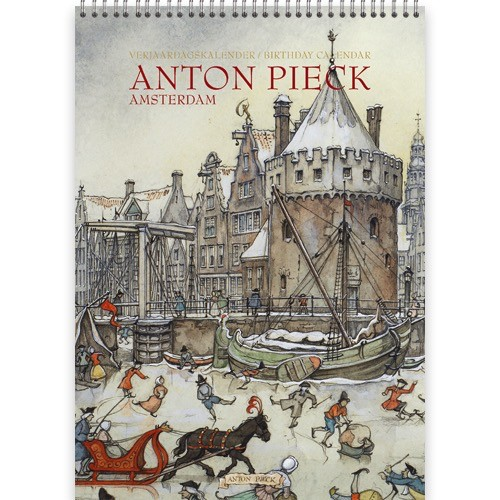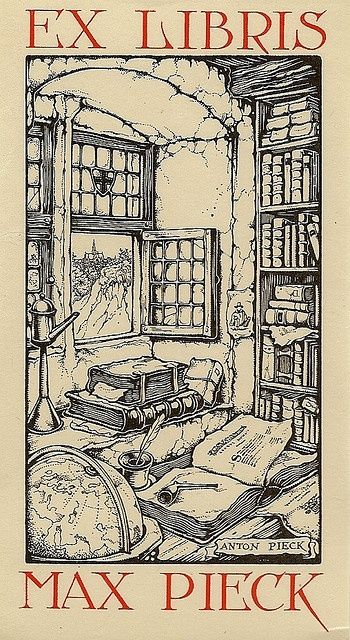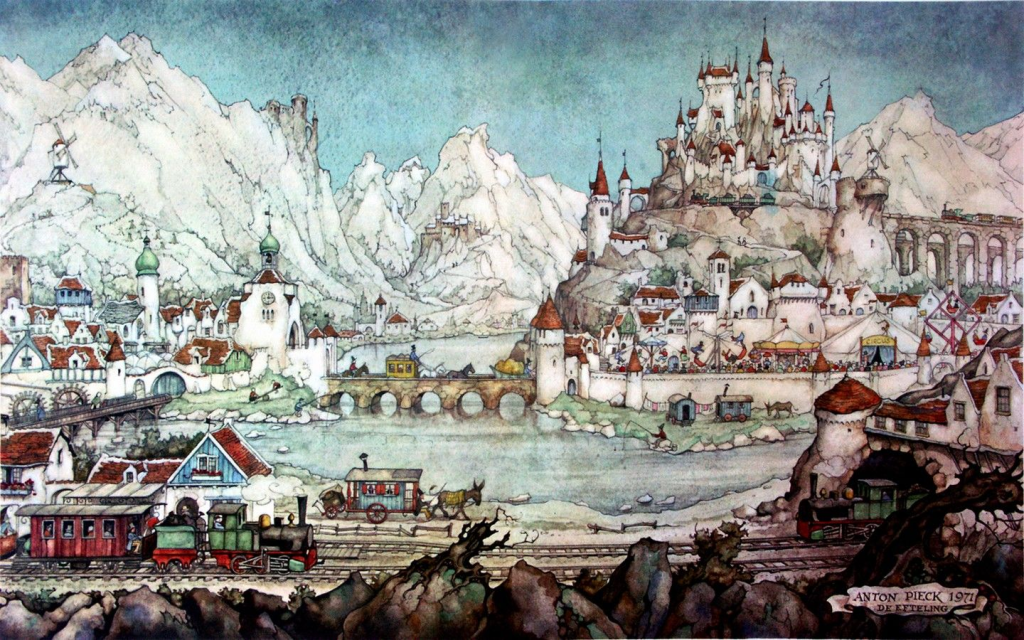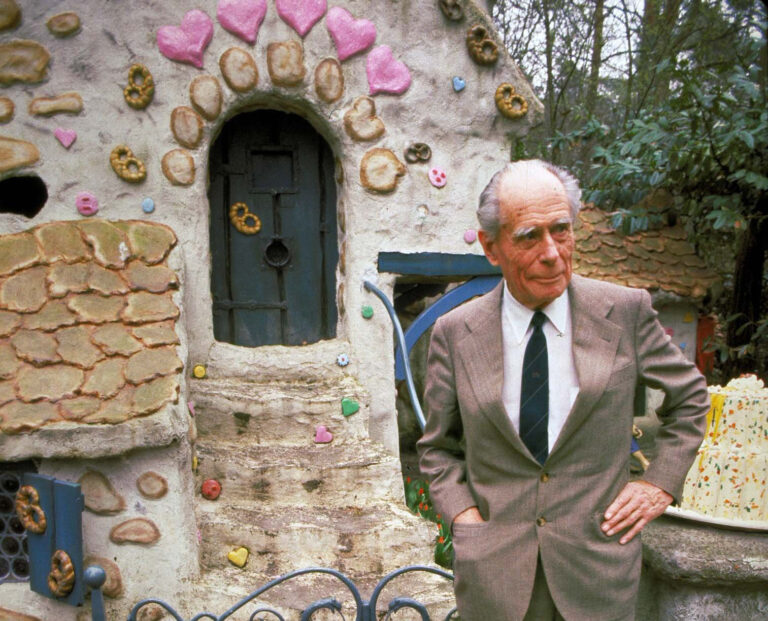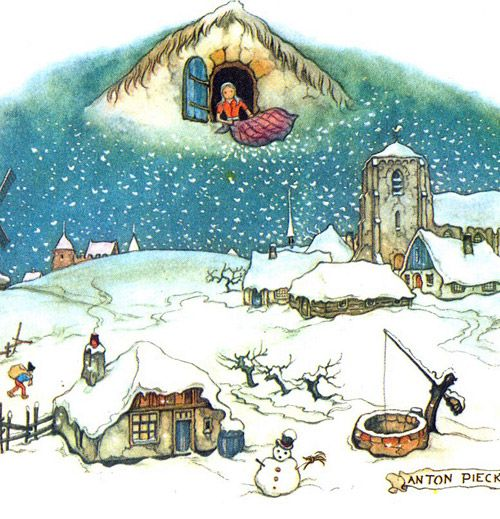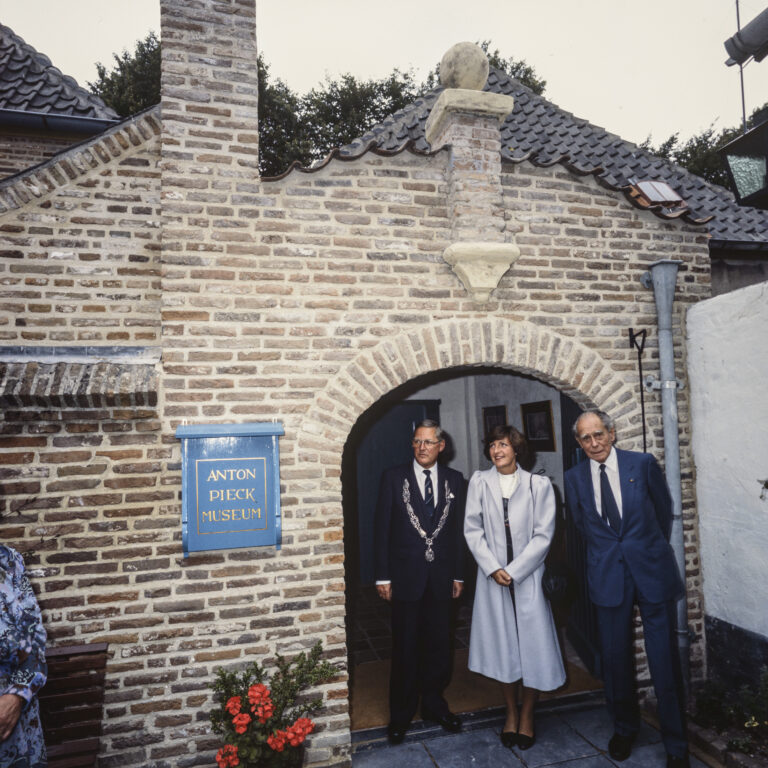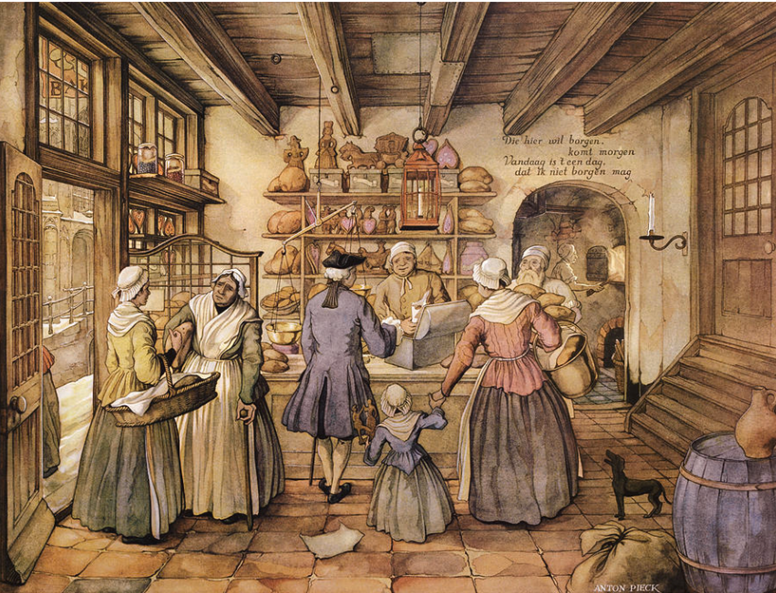
(Left click on family tree for larger view)
Nicolaas Frederik Knip (1741-1808)

A Stone Urn with Flowers and Fruit by Nicolaas Frederik Knip
In this blog I am looking at the Knip family, a Dutch artistic dynasty, a multi-generation of talented painters. To begin this journey I go back to February 12th, 1741 and the birth of Nicolaas Frederik Knip in the Dutch town of Nijmegen, which lies close to the German border. During the first thirty years of his life, he earned money for his family as a travelling painter picking up commissions on his journeys. His favoured genre was painting wallpapers for large residences, painting advertising signs for inns and various businesses. In 1774, a year after moving to Tilburg, he married Anna Elisabeth Drexler the daughter of Matthijs Drexler, the keeper of Tilburg Castle. The couple went on to have five children, four of who, like their father, became well-known artists. They were Josephus Augustus Knip, Mattheus Derk Knip, Henriëtta Geertrui Knip and Frederik Willem Knip. After his marriage, Nicolaas Knip started painting floral still lifes and landscapes.

Saint Nicholas as Patron of the Butchers’ Guild (1789)
In 1787 Nicolaas Knip moved to Den Bosch and two years later, he collaborated with the Dutch painter Quirinus van Amelsfoort on the large painting (220 x 530 cms) commemorating the fourth century saint, St Nicholas of Myra as the Patron of the Butchers’ Guild. We see the bishop in the centre of the work holding out his hands to three children. At the top right are some angels who have alerted the saint to the incident. The depiction refers to the legend that through his fervent prayer the saint brings to life the children and is a reminder of the gruesome tale which tells of three children who, at the time of a famine, were cut into pieces by a butcher and pickled in a barrel. It now hangs in the Den Bosch town hall. For the last 12 years of his life, Knip was completely blind. He died in Den Bosch in 1808.
Josephus Augustus Knip (1787-1847)

The Shelling of ‘s-Hertogenbosch during the French Revolutionary Wars by Josephus Augustus Knip (1800)
Josephus Augustus Knip was the eldest child of Nicolaas and Anna Knip (née Drexler). He was baptized on August 3rd 1777. In 1788, when he was eleven years old, he moved with his family to ‘s-Hertogenbosch. His father was his first art tutor. Unfortunately when his father’s eyesight deteriorated and eventually became blind in 1796, Josephus had to take on the role as breadwinner. In 1801 at the age of twenty-four, he built up a reputation as a landscape artist in Paris, where he accepted commissions for topographical landscape works. He spent nine years in Paris during which time he became drawing master to Napoleon III of France. Josephus left Paris at the end of 1809 and travelled to Italy and based himself in Rome for three years.

The Gulf of Naples with the Island of Ischia and the Epomeo Volcano in the Background by Josephus Augustus Knip (1818)
During those three years he made many painting depicting Naples, the Sabine Hills, the Alban Hills, and the Campagna. He was greatly influenced by the panoramic landscapes he saw during his travels. He made numerous detailed sketches which he would later convert into beautiful watercolour and oil paintings. One such work from his days in Italy is his 1818 work entitled The Gulf of Naples, with the Island of Ischia and the Epomeo volcano in the background. Also depicted are the Roman monuments. You can see the ruins of the Colosseum on the left, the aqueduct of Nero and the monastery church Quattro Coronati. In 1813, Josephus went back to his Dutch homeland with his wife, the painter Pauline Rifer de Courcelles, whom he had married in 1808. He settled in ‘s-Hertogenbosch, where he set up his studio. Later he lived in Amsterdam. His career was cut short in the late 1820s when he lost the sight of one eye. By 1832 he was completely blind. He died at the end of September 1847, aged 70.
Illustration by Pauline Rifer De Courcelles femme Knip for the book, Les Pigeons.
There is some doubt as to Henriëtte’s mother, as at the time of her birth in 1821, Josephus and Pauline were living apart, their marriage had been a disaster as they were such different characters and incompatible. Josephus was then living with his mistress, Cornelia van Leeuwen, who is credited with being Henriëtte’s mother. In 1824, when Henriëtte was three years old, Pauline and Josephus divorced and thereafter she signed her pictures ‘Pauline De Courcelles femme Knip’.
De Courcelles’s earliest paintings featured American birds and later she provided illustrations of pigeons for the book Histoire Naturelle des Pigeons, written by the Dutch ornithologist Coenraad Temminck. The backstory to this publication is filled with intrigue as in 1811 when she had finished one volume of pigeons, she published it straight away, much to the annoyance of Temminck who did not publish his own three-volume work until 1813-15. He stated with much anger that she had rushed in and ‘stolen’ his text on pigeons of the world and published it with her illustrations before he had completed his 3-volume set.
Henrietta Geertrui Knip (1783-1842)
Henriëtta Geertrui Knip was born in Tilburg on July 19th 1783. She was the second-born child of Nicolaas and Anna Knip. Initially she was tutored in painting by her father, Nicolaas but when he began to go blind she turned to her older brother Josephus for artistic advice. In April 1801 when Josephus went to Paris she accompanied him. She had always been interested in floral paintings and so, on arriving in Paris, she took lessons from the Dutch flower painter Gerard van Spaendonck, who had been living and working in Paris since 1769.

Flowers in a Vase by Henriëtta Geertrui Knip (1830)
Once she had completed her studies she returned to The Netherlands where she spent the summers in Haarlem and was employed by various flower companies to illustrate their adverts and brochures. During the harsh winters and out of the flower growing season she returned to Amsterdam where she taught ladies how to paint.

Floral Bouquet by Henriëtta Geertrui Knip (1834)
She eventually returned to the French capital in 1824 and studied under Jan Frans van Dael, a Flemish painter and lithographer who specialised in floral painting and still lifes featuring various fruits. She remained close to her older brother and when he suffered from blindness and had to give up painting, Henriette was able to step in and support him and his family. Henriëtta Geertrui Knip died in Haarlem on May 29th 1842, aged 58.
Mattheus Derk Knip (1785-1845)

Dr. P.J. de Willebois with His Family at the Rhine in Germany by Mattheus Knip (c.1823)
Mattheus Derk Knip, the second son of Nicolaas Frederik Knip and his wife Anna, was born on December 30th 1785 in Tilburg. Little is known about his early years but, like his sister Henrietta, it is believed that he received his first art tuition from his father and later from his elder brother Josephus. It is thought that he also studied under the Brabant brothers, Gerard van Spaendonck and his brother Cornelis van Spaendonck who were renowned floral painters. At the time, there were no leading flower painters in Paris and so the brothers were able to make a name for themselves with their favoured genre. King Louis XVI appointed Gerard to the role of royal miniature flower painter.

View of Oirschot and St Petrus Church by Mattheus Knip
When his siblings, Josephus, Mattheus and Henriette moved to Paris in 1801 he went with them and remained in the French capital until 1806. On returning to the Netherlands he set up home in Vught and then Den Bosch in the North Brabant, a province in the south of the Netherlands. Mattheus would go on to paint many Brabant landscapes. Mattheus rarely signed his work which made the attribution of his work difficult. Mattheus Knip married twice. His first marriage in 1810 was to Elisabeth Ubens and they had a son, Henri Knip, who also became a painter. Mattheus married a second time in 1822. His second wife was Cornelia Adriana van Hoften. He died in Vught on April 24th 1845, aged 59.
Hendrikus Johannes “Henri” Knip (1819-1897)
Self portrait by Henri Knip
Henri Knip, the son of Mattheus and Elisabeth Knip, was the youngest member of the family of artists. He was born in den Bosch on April 20th 1819. It is thought that during his career , around 1833, he travelled to Italy and Switzerland accompanied by his father, Mattheus Derk Knip. The long painting trip through the mountainous regions of those countries were captured on canvas and resulted in half of his work such beautiful scenes. As well as using his sketches from his painting trip to aid his finished oil paintings he also made use of topographical lithographs which were circulating at that time. Other of Henri’s works depicted village scenes and buildings, including churches, castles and country estates.

A Mountainous Landscape by Henri Knip
In 1854, Henri was living in Amsterdam but two years later he took up residency in Brussels and in the latter years of his life he lived Schaerbeek where he died in 1897, aged 78. Henri had been married to Louisa Henriëtte Victoire Verassel.
Henrietta Ronner-Knip (1783-1842)
Henriette Ronner-Knip
Henriëtte Ronner-Knip, named after her aunt, was born in Amsterdam on May 31st 1821, the younger of two children of Josephus Augustus Knip and Cornelia van Leeuwen. She had one brother, August, who was almost two years older than her. Henriette’s parents were not married at the time of Henriette’s birth as her father was still officially married to his French animal painter wife, Antoinette Pauline Jacqueline Rifer de Courcelles.
Katjesspel (The Kitten Game) by Henriette Ronner-Knip
Her father, despite his failing eyesight, tutored both her and her brother in the techniques of painting. In 1833, after a short stay in The Hague, the Knip family moved to Beek before returning to ‘s-Hertogenbosch. When she was twenty years old, she and the family took up residence in the nearby village of Berlicum in North Brabant, close to the River Aa. Once her father had to give up painting because he was going blind, Henriette took on the task of looking after the household and providing for the family.

A Kitten Playing by Henriette Ronner-Knip
On the death of her parents, her father Josephus in 1847, and her mother Cornelia in 1848, she left Berlicum and went to Amsterdam where she joined, and was the first female member, of the Arti et Amicitae Society (For Art and Friendship). The Society played a key role in the Netherlands art scene and in particular in the Amsterdam art schools. It is still a focal point for artists and art lovers in the city of Amsterdam.

Cart Dog at Rest by Henriette Ronner-Knip
Henriette began painting local landscapes of North Brabant. Often she would sketch scenes using pencil and watercolours but soon began to paint using oils. The breakthrough for her was when she and her brother August were commissioned in 1835 to produce a painting featuring the Tilburg farm owned by the Dutch ruler, Prince of Orange. A year later many of her paintings depicting North Brabant scenes were exhibited at various salons.

Mother and Kittens playing by Henriette Ronner-Knip
In 1850 she married Feico Ronner and moved with him to Belgium, living first at Rue de la Régence 7, in the north-east suburb of the Belgium capital, Saint-Josse-ten-Noode, much later, in 1878, they settled in the Brussels suburb of Elsene. Feico acted as Henriette’s business manager looking after money matters and the correspondence. It was when she moved to Brussels that her painting genre changed from landscapes and village scenes and focused on depictions of dogs and then latterly, around 1870, her paintings incorporating cats which was probably what she was best remembered for.

The Musicians by Henriette Ronner-Knip
She exhibited her work at many exhibitions and received many awards. In 1887, she was awarded the Order of Leopold and, in 1901, became a member of the Order of Orange-Nassau. Feico and Henriette had three children, a son Alfred and two daughters, Allice and Emma who all became artists and Henriette would often show her work along that of her children. Henriette Ronner-Knip died at Ixelles, Belgium on February 28th 1909, aged 87.
Augustus Knip (1819-1859)
Brother of Henriette Ronner-Knip.
Spring in the Sheep-pen by Augustus Knipp
Henriëtte’s elder brother Augustus who was born in 1819 and, like his sister, was also tutored by his father and later became a successful artist, who, at the age of sixteen, was commissioned with his sister, to paint farmyard scenes at King Willem II’s farm. His speciality was the depiction of farm animals often portrayed in indoor settings.







